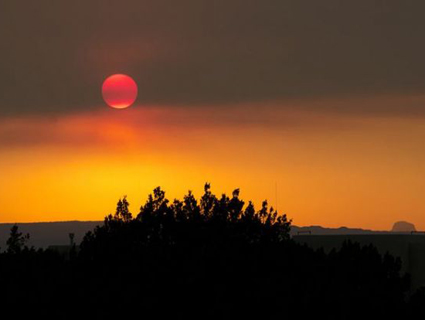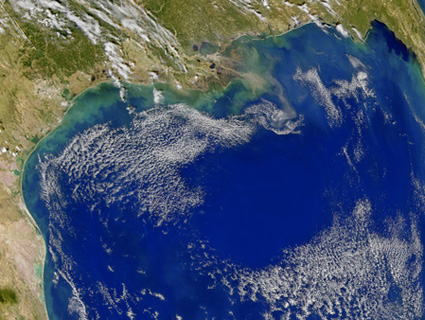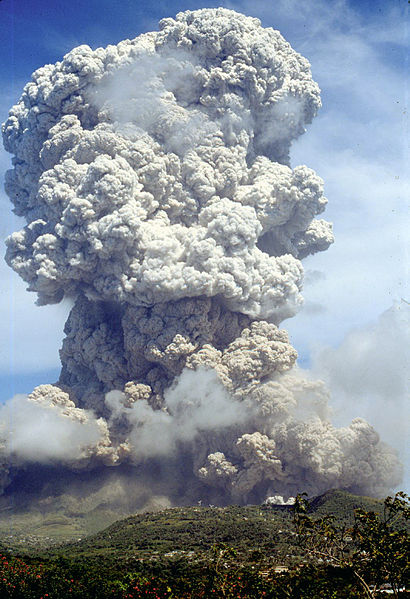
Soufriere Hills Volcano, Montserrat.Credit: <a href="http://nsf.gov/news/mmg/mmg_disp.cfm?med_id=64852&from=img">Barry Voight</a>, Penn State.
Thanks to four less-than-monstrous volcanic eruptions, we’ve been spared 20% more greenhouse warming since 1998. This according to a new paper in early view at Science.
The authors note two past “colossal” eruptions that cooled the Earth: Tambora in 1815, which cause a year without a summer, and Pinatubo in 1991, which cooled our world by 1°C/1.8°F for more than a year.
What this team of climate researchers was investigating was whether or not smaller eruptions since then have also managed to inject enough gaseous sulfur directly into the tropical stratosphere to create an atmospheric parasol against our rising greenhouse gasses.
Tropical eruptions are thought to be especially important for climate change since the particulate can be transported into the stratospheres of both northern and southern hemispheres, affecting the entire globe for many months. Susan Solomon at the University of Colorado Boulder, and her colleagues, write:
The cooling effect of volcanic eruptions mainly arises not from the injected ash, but from SO2 [sulfur dioxide] injected by plumes that are able to reach beyond the tropical tropopause into the stratosphere, whereupon the SO2 oxidizes and temporarily increases the burden of stratospheric particles. Stratospheric aerosols are composed largely of dilute sulfuric acid droplets that effectively reflect some incoming solar energy back to space.
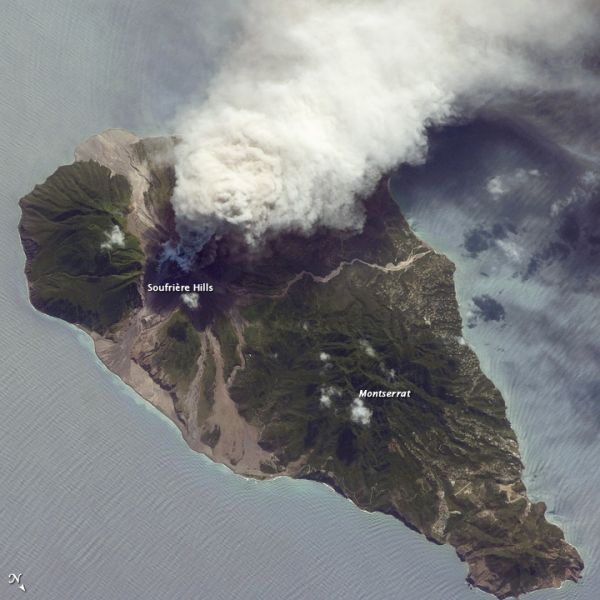 Soufrière Hills Volcano. Credit: NASA, the ISS Crew Earth Observations experiment and the Image Science & Analysis Group, Johnson Space Center.
Soufrière Hills Volcano. Credit: NASA, the ISS Crew Earth Observations experiment and the Image Science & Analysis Group, Johnson Space Center.
The team analyzed data from the CALIPSO (Cloud-Aerosol Lidar and Infrared Pathfinder Satellite Observations) satellite launched in 2006 and found that debris from two rather small tropical eruptions in 2006—Soufrière Hills and Tavurvur—spread around the world via the stratosphere. They also found that two northern-latitude eruptions in 2008 and 2009—Kasatochi and Sarychev—spread through much of the northern stratosphere.
The research suggests that—contrary to prior understanding—these smaller eruptions did manage to climb into the lower stratosphere and cool the planet by about 0.07°C/0.1°F since the late 1990s… thereby adding another variable to the cocktail already counteracting our greenhouse inputs, including:
- “Colossal” Pinatubo-sized eruptions
- Decreases in the brightness of the sun at the solar minimum
- Short-lived pollutant hazes, aka the “brown clouds,” from Asia
- Natural climate variables, like the El Niño/La Niña-Southern Oscillation
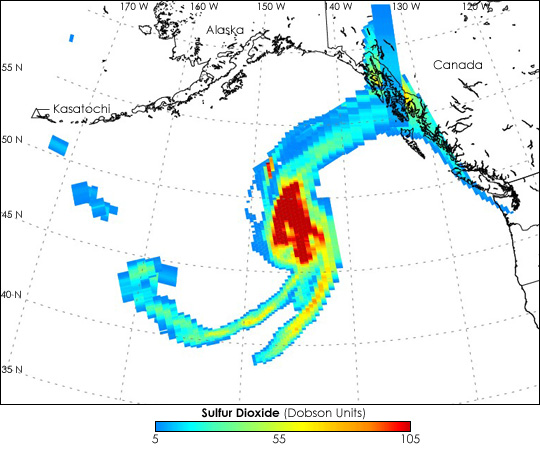 Three explosive eruptions in 2008 rocked the Kasatochi Volcano, emitting a dense cloud of about 1.5 million tons of sulfur dioxide. NASA OMI image courtesy Simon Carn, Joint Center for Earth Systems Technology (JCET), University of Maryland.
Three explosive eruptions in 2008 rocked the Kasatochi Volcano, emitting a dense cloud of about 1.5 million tons of sulfur dioxide. NASA OMI image courtesy Simon Carn, Joint Center for Earth Systems Technology (JCET), University of Maryland.
The paper:
- S. Solomon, J. S. Daniel, R. R. Neely III, J. P. Vernier, E. G. Dutton, and L. W. Thomason. The Persistently Variable “Background” Stratospheric Aerosol Layer and Global Climate Change. Science. DOI: 10.1126/science.1206027.

